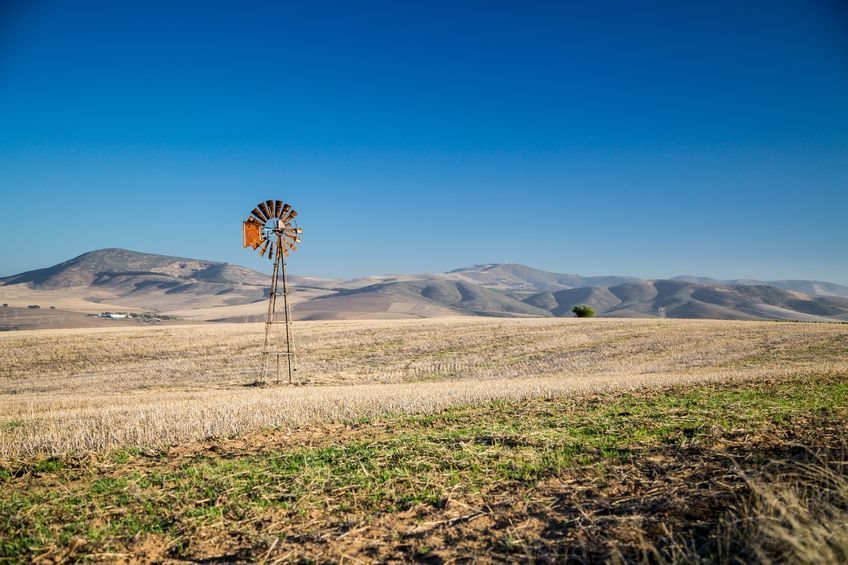
The current growth momentum in South Africa’s agricultural sector, which I have written
about several times over the past few weeks, is not just a development of the past two
seasons. If one casts an eye back to 2010, just two years before the official publication of the National Development Plan, the agriculture sector’s aggregate volume of production in 2020 was 19% higher compared with that year. This was spread across all subsectors, i.e.,
horticulture, animal products and field crops – although at varying levels, with field crops
having shown more modest growth.
If there is one thing the sector could be faulted on over the past decade, it is that focus on
the inclusion of new black farmers into the commercial level has taken somewhat of backseat. Still, while this may be true at an overall level, some partnership programmes between government, farmers and agribusiness have yielded positive results in integrating black farmers into the commercial farming level. From a policy perspective, inclusion (in addition to growth) is an underlying theme to the government’s programme, such as the
Agriculture and Agro-processing Master Plan.
Still, I believe that the agricultural sector could have expanded more than what we observed in the past decade had it not been hindered by the following challenges, (1) inefficiencies in state administration, (2) infrastructure challenges, (3) lack of security in rural areas and (4) prevailing uncertainty.
First, on the issue of inefficiencies in state administration, I have recently discussed the problems facing local governments, but this extends to biosecurity challenges, such as the need to strengthen animal health, meat hygiene, and state veterinary service at the national and provincial levels, among others.
The spreading of Foot and Mouth Disease and African Swine Fever Disease show the importance of having an efficient and agile response mechanism to animal disease. Fortunately, this matter has reached policymakers, and thus, industry leaders and government are working together to establish mechanisms to respond more efficiently. The enforcement of the Agricultural Products Standards and inefficient staff complement are some of the issues that should be addressed to strengthen the state effectiveness.
Second, the South African farming sector’s infrastructure challenges include poorly maintained road networks in the central regions of the country and almost non-existent road networks in the areas of the former homelands. These challenges have implications on market access for new entrant farmers and increases transaction costs for the commercial farmers.
Inadequate water infrastructure in some regions of South Africa is another challenge for agriculture, along with a need for more agile management of water rights allocation. Of equal importance is the need for cost-effective and reliable electricity. The recent reforms in the energy space with the government increasing the threshold for the exemption of
licences for self-generation by companies to 100 MW should help ease the energy constraints over the medium to long term.
The infrastructure discussion would be incomplete without revisiting a theme I have raised elsewhere in the past: logistics. South Africa’s agricultural sector is export-orientated. Therefore, efficient and cost-effective shipping ports and trail lines are critical to the expansion of the industry. The current government and industry strategy is to expand agricultural output and reach broader export markets, but such will only succeed if the logistics are efficient.
Industry leaders, including my employer, the Agricultural Business Chamber of SA (Agbiz) and rail industry leadership, are in constant discussions to address the logistical challenges.
To my mind, there is a need for increased investment in this area to support agriculture and other sectors of the economy that are geared towards exports. Third, South Africa is experiencing an increase in rural crime. These crimes include stock theft, farm attacks, theft of cables, pumps, fences, and other vital equipment needed in food production and farming more broadly.
While there has not been a noticeable impact of this increasing crime on agricultural activity and investment, I fear that a worsening in this problem without decisive government intervention to ensure farm safety could have long term
implications on the sector.
The Minister of Agriculture, Land Reform and Rural Development should use the stakeholder engagement forums that were established to draft a collaborative Sector Master Plan to mitigate the increasing crime in conjunction with the South African Police Service. This should enhance the National Rural Safety Strategy.
Lastly, the uncertainty about the long-term policy certainty is another ongoing factor that needs to be addressed urgently. The parliamentary committee with the task to “make explicit what is implicit” in Section 25 of the Constitution has until the end of August 2021.
Hence, it is prudent that Parliament decides on the Section 25 matter, mindful of the broader impact on the agricultural sector and other sectors of the economy when South Africa is at an economic reconstruction phase. I have long argued that land reform is an important policy imperative, and we are in full support of it. Yet, I do not believe that an amendment of the Constitution will lead to the country’s desired outcome of prosperity.
In sum, South Africa’s agricultural sector has expanded notably over the past decade and is currently having another strong season. However, there is still potential for further expansion in the future through the scaling up of underutilized land and strengthening of various partnerships that could be formulated between new entrant farmers and existing commercial ones. This approach will help foster inclusion, which has been minuscule in the past decade. This could attain some level of success if the government addresses the constraints above.



